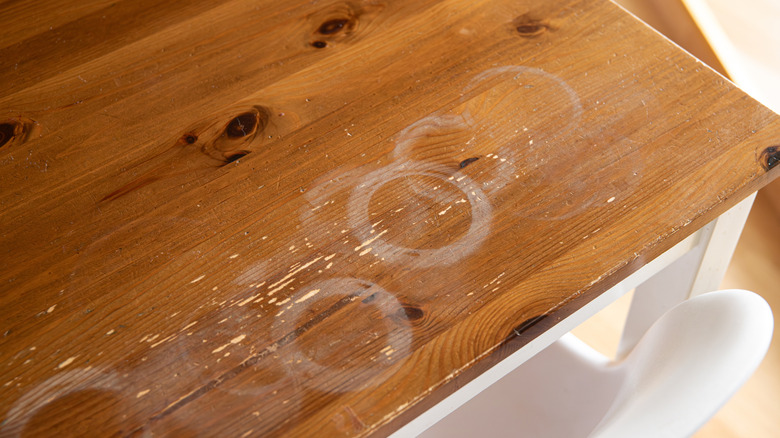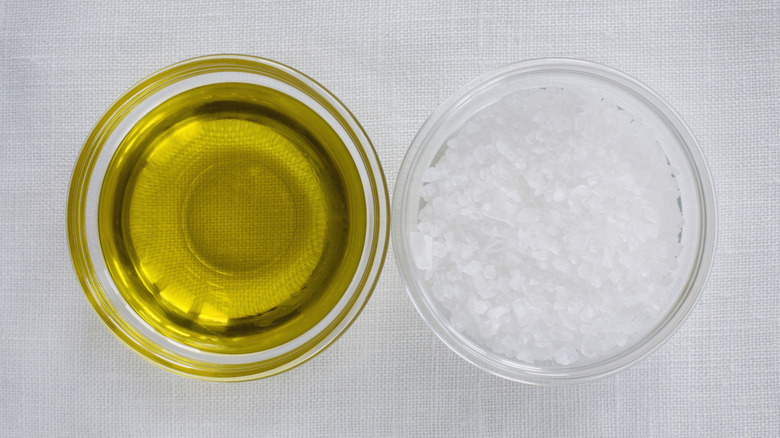The 2 Ingredient DIY Cleaner That Will Remove Those Pesky Stains From Your Wooden Kitchen Table
Cleaning a kitchen can feel overwhelming when you've got dozens of bottles of cleaner sitting under your sink, each with a different purpose. Especially when you're trying to maintain something as delicate as a wooden kitchen table, reaching for the wrong cleaner can lead to ruined furniture. But what if we told you there's a way to remove wood stains simply using ingredients you already have in your pantry? Don't believe us? We consulted Hector Stewart, CEO at Baltimore Home Cleaning Services, to learn more.
So what should you reach for to clean wood tables? Salt and olive oil. According to Stewart, "if you have a stubborn white watermark or other stain on a wooden kitchen table, a mixture of olive oil and salt can work wonders. It might sound like salad dressing, but this combo actually lifts stains and reconditions the wood at the same time." While it may seem odd to reach for olive oil as your liquid base, it's important to remember that water can actually stain wooden furniture, so it's good to reach for an ingredient that won't add further damage. It's best to use equal parts salt and olive oil for an even mixture that isn't too abrasive, but instead actually helps draw out and remove the moisture causing the stains. Skeptics may opt to use other ingredients, like mayonnaise, for removing water stains — but olive oil and salt truly work wonders, and we'll explain how.
Cleaning wood with olive oil and salt
So how exactly does the combination of olive oil and salt work to clean your wooden table? According to Hector Stewart, "the coarse salt is abrasive and absorptive, while the olive oil penetrates the wood and displaces moisture." The moisture leftover from liquid on the bottom of dishes or glassware gets trapped in the upper layers of the wood finish, leaving ring stains. "Rubbing salt into the stain helps to draw out that moisture — salt literally absorbs water, which can pull the trapped moisture out of the wood's pores," says Stewart. "At the same time, the abrasive grain of the salt gently scrubs away any mineral deposits or grime on the surface." So while this works well for finished wood like kitchen tables, note this olive oil mixture does not work for all wood products, like cutting boards.
You'll likely notice that your table looks revitalized after using Stewart's cleaning hack. According to Stewart, "wood that has water damage often looks dull or cloudy because water drove out the natural oils. By adding oil back, you re-saturate the wood fibers, which can restore color and luster to the area, making the stain far less visible." Not only will your table get a deep clean, but the wood itself will get some T.L.C. Olive oil can also be great for cleaning up sticky residue in other parts of your kitchen — just be sure to combine it with compatible safe ingredients that won't accidentally harm your surfaces further.


